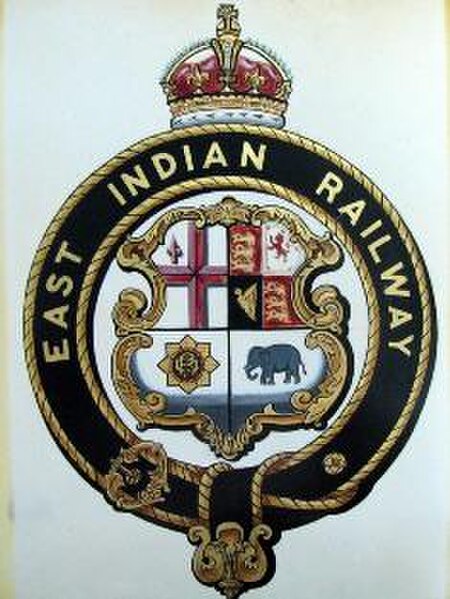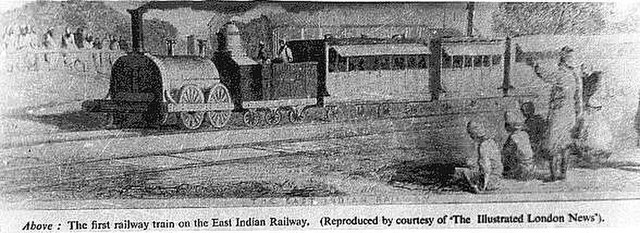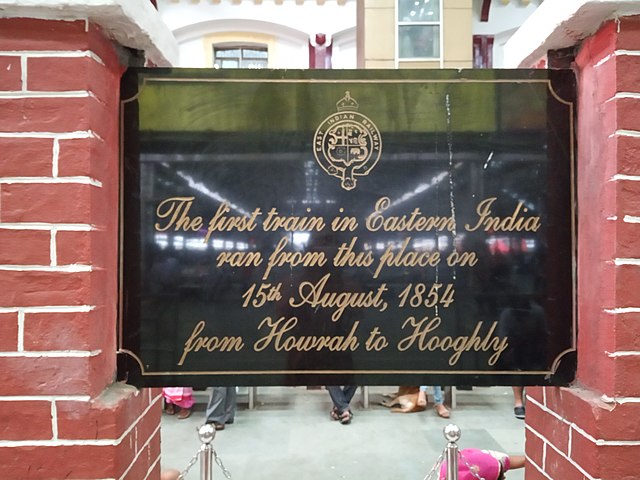East Indian Railway Company
The East Indian Railway Company, operating as the East Indian Railway, introduced railways to East India and North India, while the Companies such as the Great Indian Peninsula Railway, South Indian Railway, Bombay, Baroda and Central India Railway and the North-Western Railway operated in other parts of India. The company was established on 1 June 1845 in London by a deed of settlement with a capital of £4,000,000,
largely raised in London.
East Indian Railway Company
First train of the East Indian Railway, 1854
Plaque at Howrah station for first train in Eastern India on 15 August 1854
Great Indian Peninsula Railway
The Great Indian Peninsula Railway was a predecessor of the Central Railway, whose headquarters was at the Boree Bunder in Mumbai. The Great Indian Peninsula Railway Company was incorporated on 1 August 1849 by the Great Indian Peninsula Railway Company Act 1849 of the Parliament of the United Kingdom. It had a share capital of 50,000 pounds. On 21 August 1847 it entered into a formal contract with the East India Company for the construction and operation of a railway line, 56 km long, to form part of a trunk line connecting Bombay with Khandesh and Berar and generally with the other presidencies of India. The Court of Directors of the East India Company appointed James John Berkeley as Chief Resident Engineer and Charles Buchanan Ker and Robert Wilfred Graham as his assistants. It was India's first passenger railway, the original 21 miles section opening in 1853, between Bombay (Mumbai) and Tanna. On 1 July 1925, its management was taken over by the Government. On 5 November 1951, it was incorporated into the Central Railway.

Great Indian Peninsula Railway
Image: Tanna Village and Smaller Viaduct (12671597053)
Image: Tanna Railway Viaduct (9142699593)






